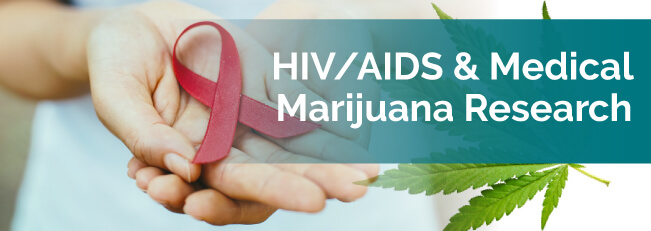
More than one million Americans live with HIV/AIDS. HIV attacks your immune cells, making it harder to fight infections, eventually becoming AIDS, the last, lethal stage.
HIV/AIDS causes flu-like symptoms and progresses to more severe issues like extreme fatigue. When left unaddressed, it can result in death. But, clinical trials suggest we can use marijuana in the fight against HIV/AIDS.
Medical marijuana works as a great supplement to the antiretroviral treatment used for HIV/AIDS. Many patients have to stop their antiretrovirals because the nausea, appetite loss and weight loss are too difficult to handle. Also, cannabis can relieve the inflammation and neuropathic pain caused by HIV/AIDS.
Margaret Haney and her colleagues wanted to compare the ability of dronabinol, a synthetic cannabinoid, and marijuana to improve the quality of life for HIV patients. They aimed to find out if one was better than the other at improving patients’ eating, sleep and mood.
To answer these questions, they studied 10 HIV-positive marijuana smokers. For two 16-day phases, they dosed the patients with dronabinol, marijuana cigarettes or a placebo. They had the patients stay in a laboratory where their eating, sleeping and mood were observed for 16 days at a time.
Both the dronabinol and marijuana worked about equally as well to increase the patient’s caloric intake, with marijuana also improving their sleep. Every dosage of the two cannabinoids except for one slightly intoxicated the subjects, but they enjoyed the euphoric effects. The team concluded that cannabinoids could substantially increase the amount of food that patients could eat.
Ronald Ellis and his team investigated the effect of smoking weed on neuropathic pain caused by HIV. Since they found evidence backing up pot’s ability to relieve pain in general, they wanted to examine how it impacted HIV neuropathy. They thought marijuana had the potential to work as a pain management option for HIV patients.
A total of 34 patients participated in the clinical trial. They smoked either an active or placebo marijuana cigarette for two five-day sessions. Ellis and his colleagues monitored their vital stats and pain levels using a variety of assessments and procedures to determine pain levels in multiple ways.
Around 46% of the patients felt at least 30% less pain when they smoked marijuana, versus the 18% of patients using the placebo. In addition to pain relief, the subjects experienced a higher quality of life thanks to increased mobility and improved mood.
Abrams and a team of other scientists also wanted to figure out the effects of cannabis cigarette use on neuropathic pain in HIV patients. Their goal differed from the one in Ellis’s study because they wanted to use an experimental pain model to measure the subjects’ pain levels.
For five days, 50 HIV-positive patients smoked either a cannabis cigarette or a placebo cigarette three times a day. To measure how much the cigarettes relieved the patients’ neuropathy, they asked the patients to self-report pain levels. Also, Abrams and his colleagues conducted pain tests using heat and capsaicin.
They discovered the cannabis cigarettes reduced 52% of patients’ pain by 30% or more. The marijuana didn’t change how much the experimental heat tests hurt the patients, but the test was an experimental one. Also, the patients didn’t report any serious adverse effects from the cannabis.
These studies are just the tip of the iceberg for information on HIV/AIDS and marijuana. Our page on treating HIV/AIDS with cannabis can give you a general idea of the subject. For questions about using marijuana for your own HIV/AIDS, consult a doctor who knows their stuff.